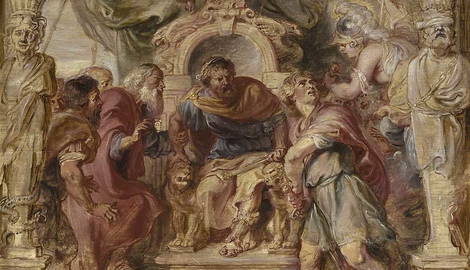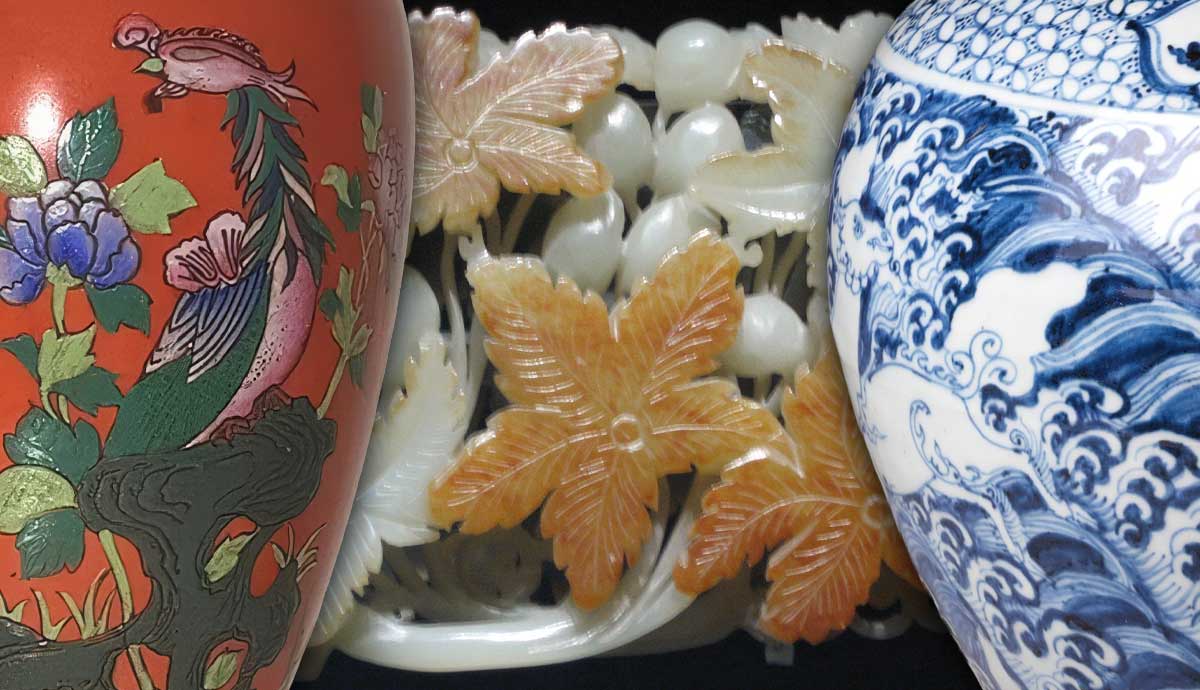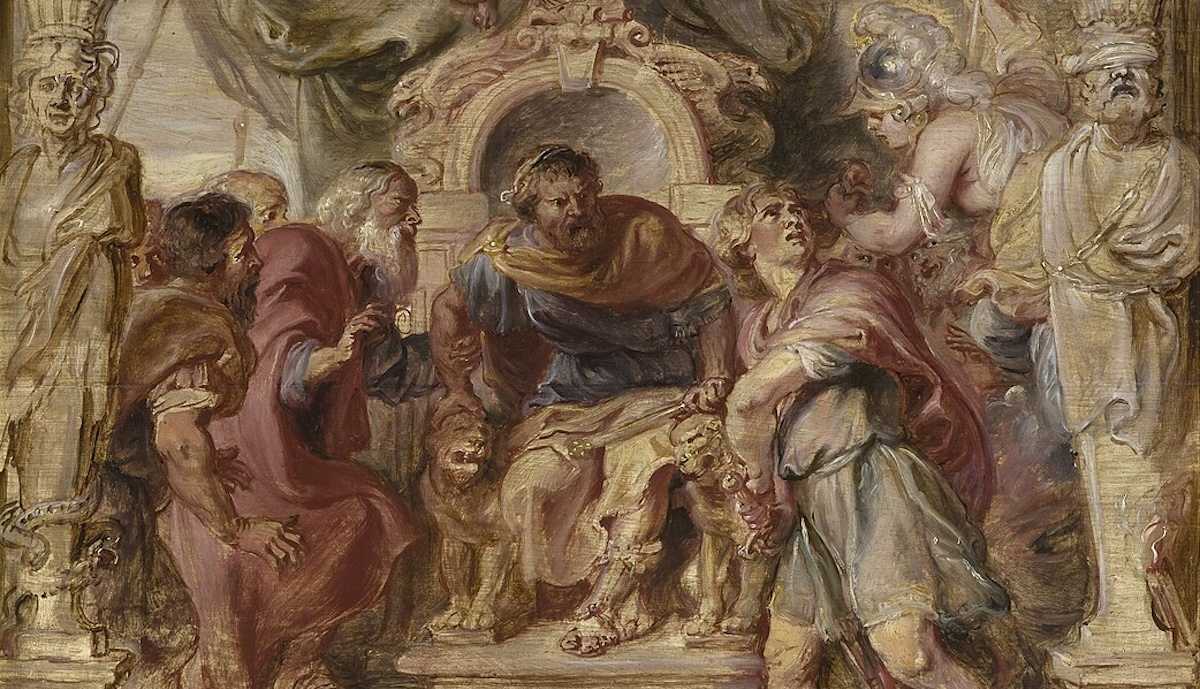
Across centuries and cultures, depictions of Achilles in art have reflected the values and ideals of each age. Ancient Greek vases, vivid Baroque dramas, and minimalist modern abstractions have continually reshaped Achilles’ image, making the mythical hero one of the most enduring figures in art history.
Achilles in Ancient Greek Art
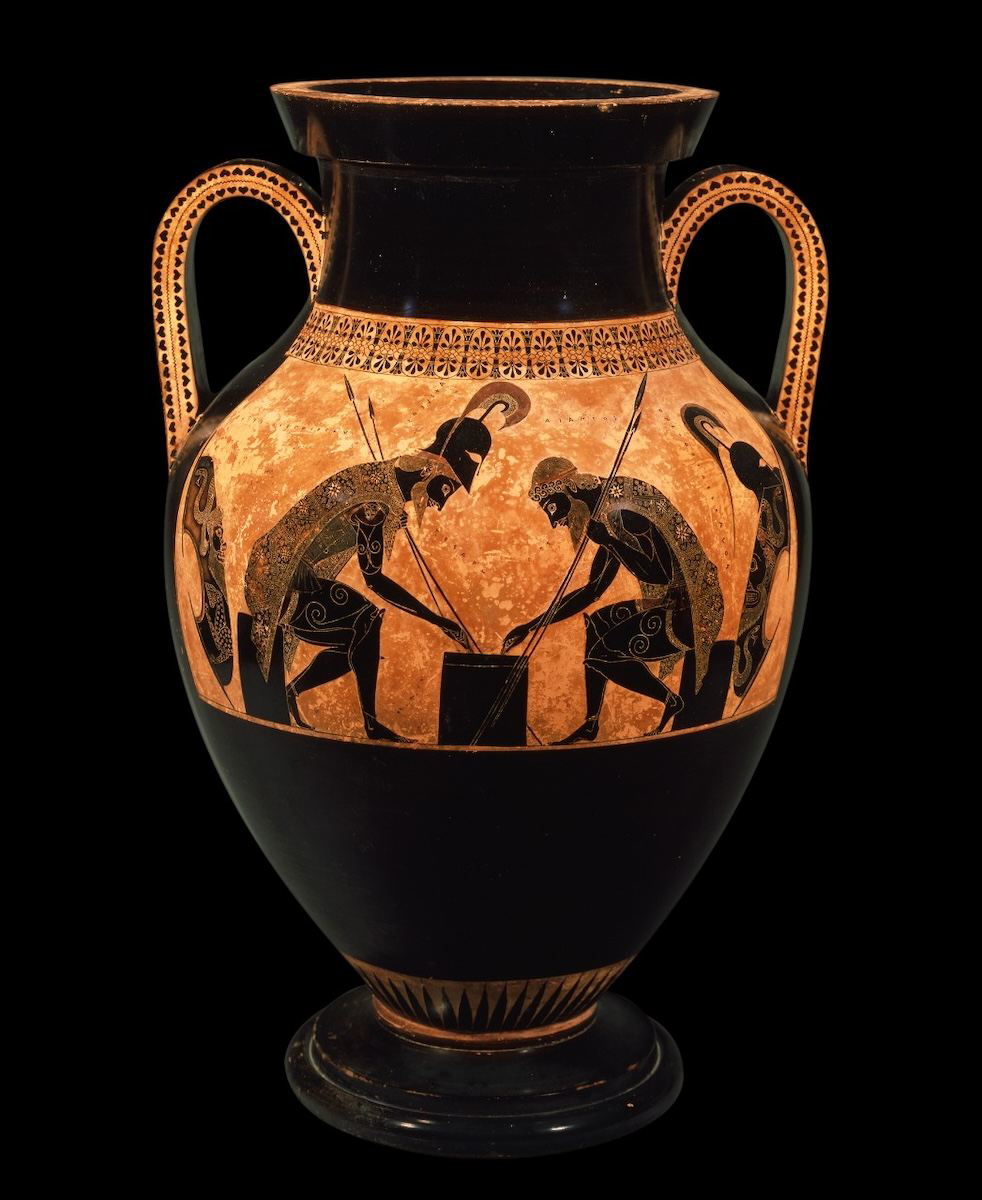
One of the earliest depictions of Achilles in art appears on a black-figure vase, credited to the ancient ceramic artist Exekias. It shows Achilles and the hero Ajax not in the midst of the Trojan War, but playing dice off the battlefield. The quiet scene highlights their shared humanity and brotherhood.
Exekias’ choice to portray the heroes at play, rather than in combat, underscores a theme central to Greek art: greatness balanced with vulnerability. Here, Achilles is not just the mythical warrior of The Iliad. Between battles, he is also an ordinary man.
The Hellenistic Pasquino Group and Achilles’ Tragic Fall
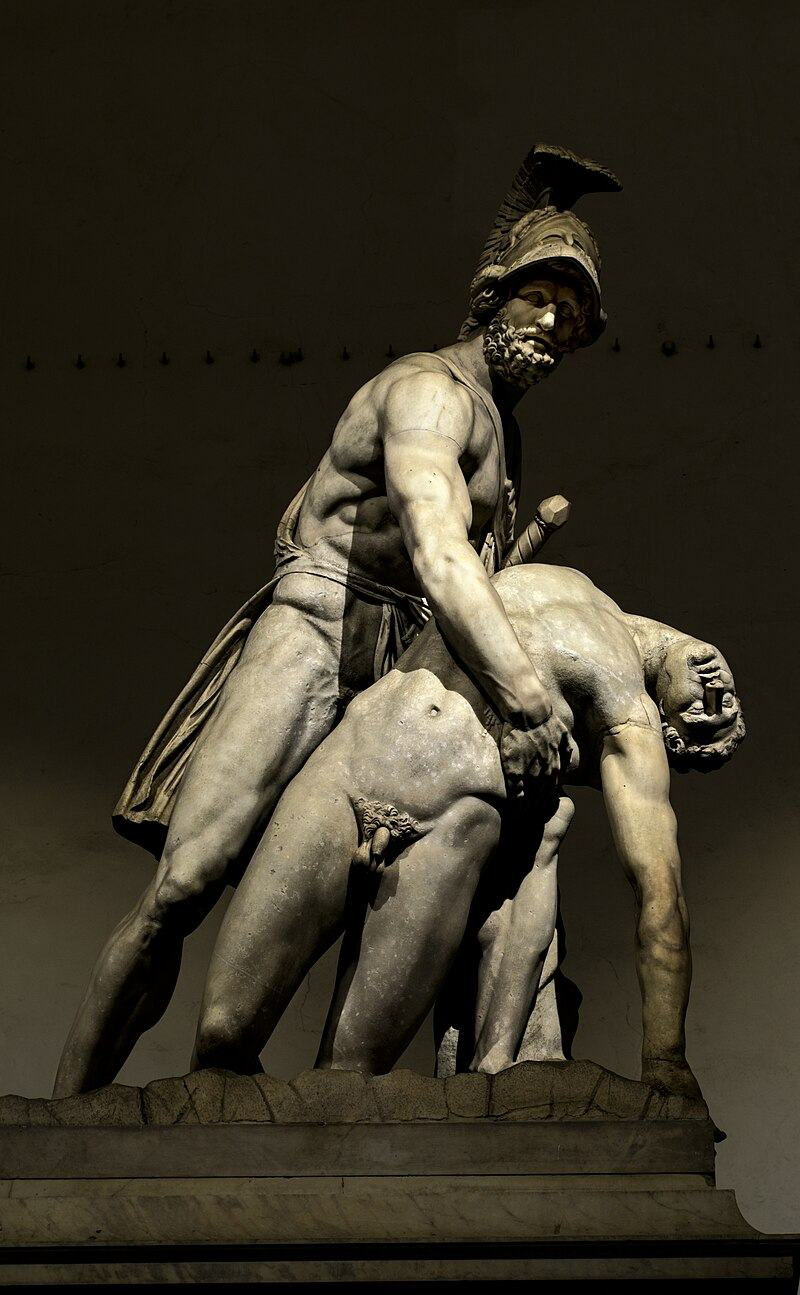
The Hellenistic Pasquino Group presents a starkly different image: Ajax lifting Achilles’ lifeless body from the battlefield. This dramatic sculpture emphasizes mortality and loss over victory and glory.
Created around 200–100 BCE, the sculpted figures reflect Hellenistic art’s focus on realism and emotional depth. Ajax’s tense strength poignantly contrasts with Achilles’ limp form, emphasizing the tragedy of the scene. Here, Achilles serves as a reminder that heroism and tragedy can go hand-in-hand. The scene also underscores the inevitability of fate.
Greek Myths in Roman Pompeii
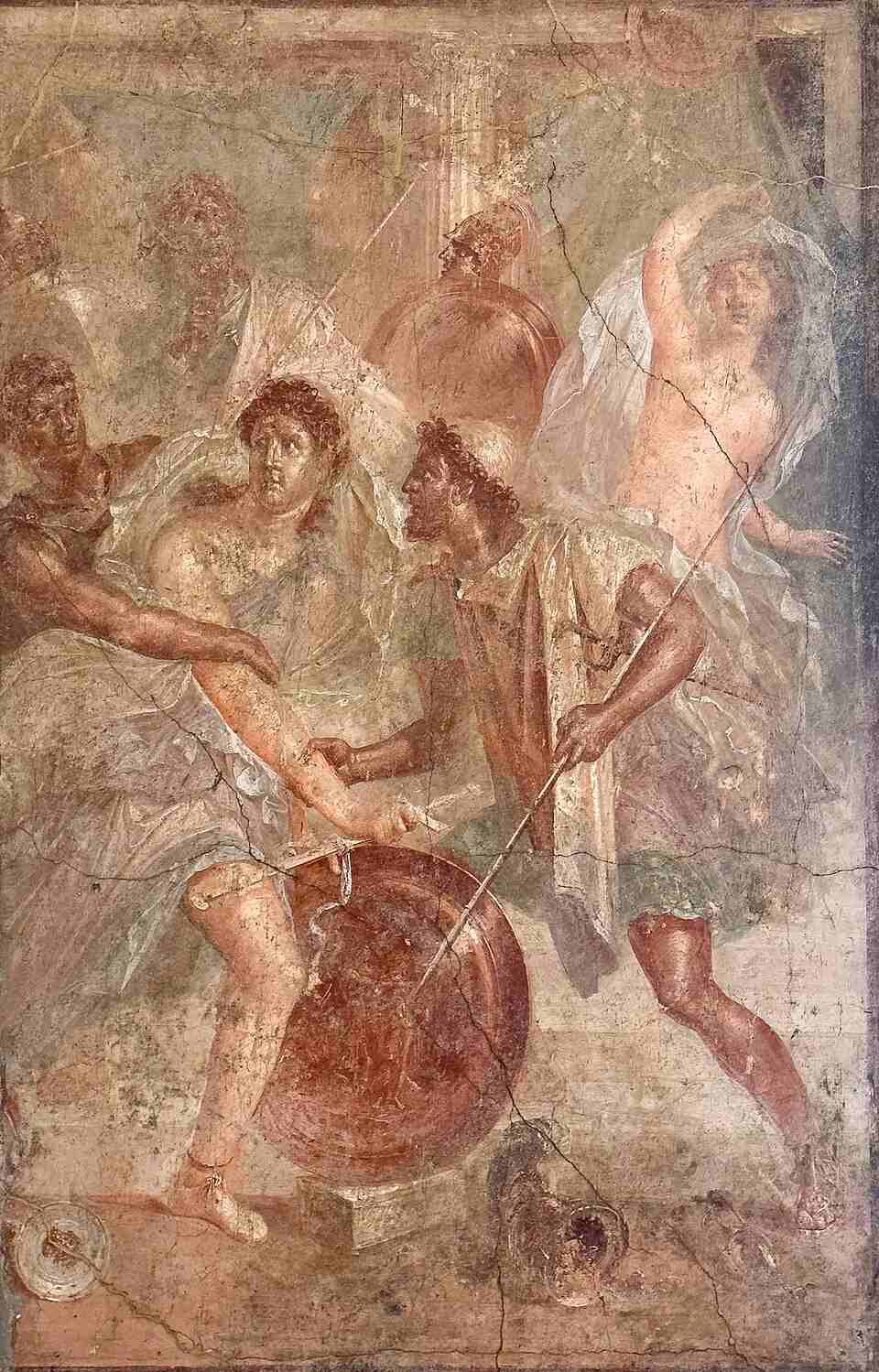
A fresco from Pompeii depicts Achilles disguised as a maiden on the Greek island of Skyros. Painted between 62 and 79 CE, the painted scene demonstrates the Romans’ fascination with Greek mythology—and particularly how this interest manifested in their everyday, domestic lives.
This scene depicts the tense moment before Odyseus reveals Achilles’ true identity. At this point in the story, Achilles finds himself reluctantly drawn toward accepting the role of hero, although he has been in hiding. This version of Achilles in art highlights the interesting tension between self-determination and destiny.
Achilles in the Renaissance
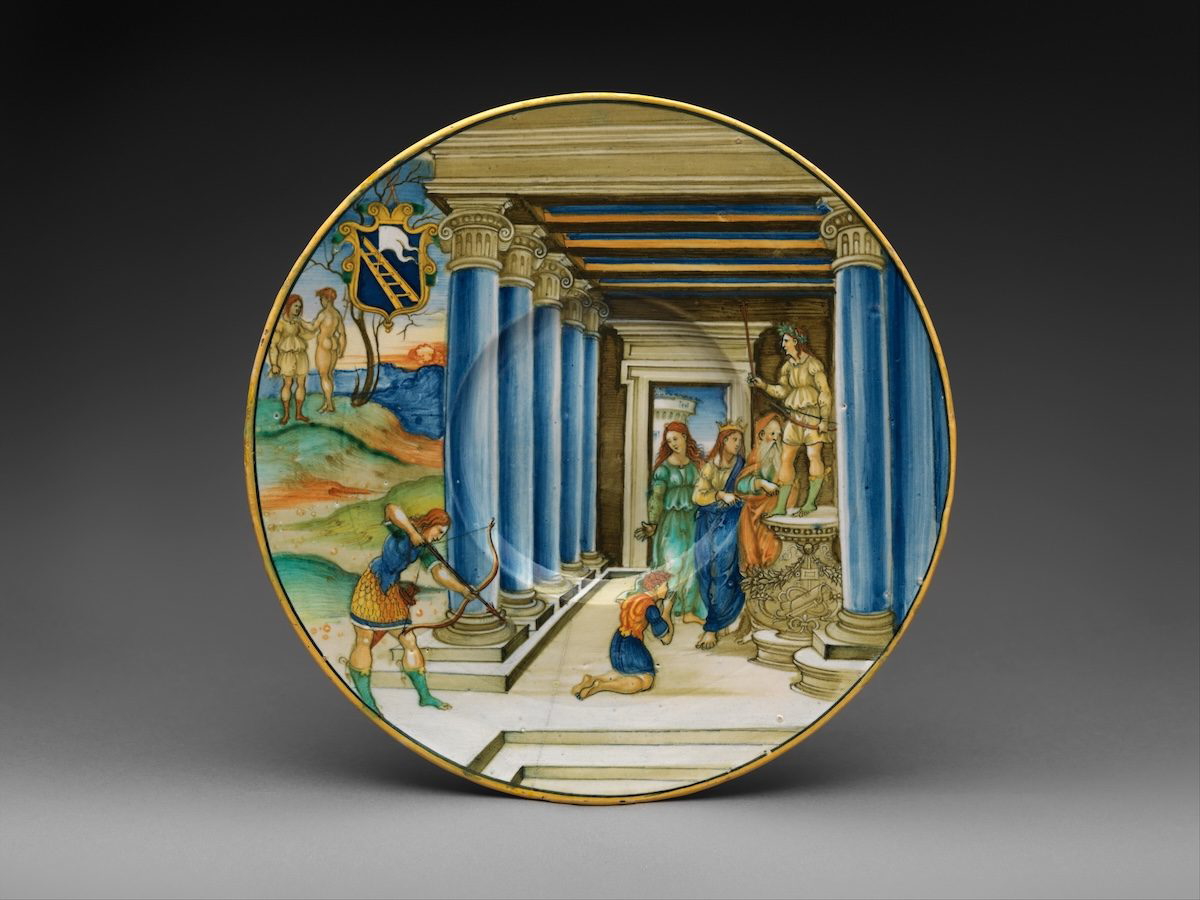
The Renaissance revived classical myths, and Achilles played an important role in this process of rediscovery. A maiolica plate from the 16th century depicts Paris of Troy killing Achilles. The most important elements of the story, including Achilles’ vulnerable heel, appear closer to the edges so they would remain visible even if the plate was holding food. Heraldic symbols of the Calini family of Brescia are also integrated into the composition.
In this period, Achilles allowed artists to explore moral struggle, ambition, and tragedy while flattering patrons with ties to antiquity. The plate embodies both a renewed admiration for classical heritage and yet another reminder that not even heroes are invulnerable.
A Baroque Depiction of Achilles
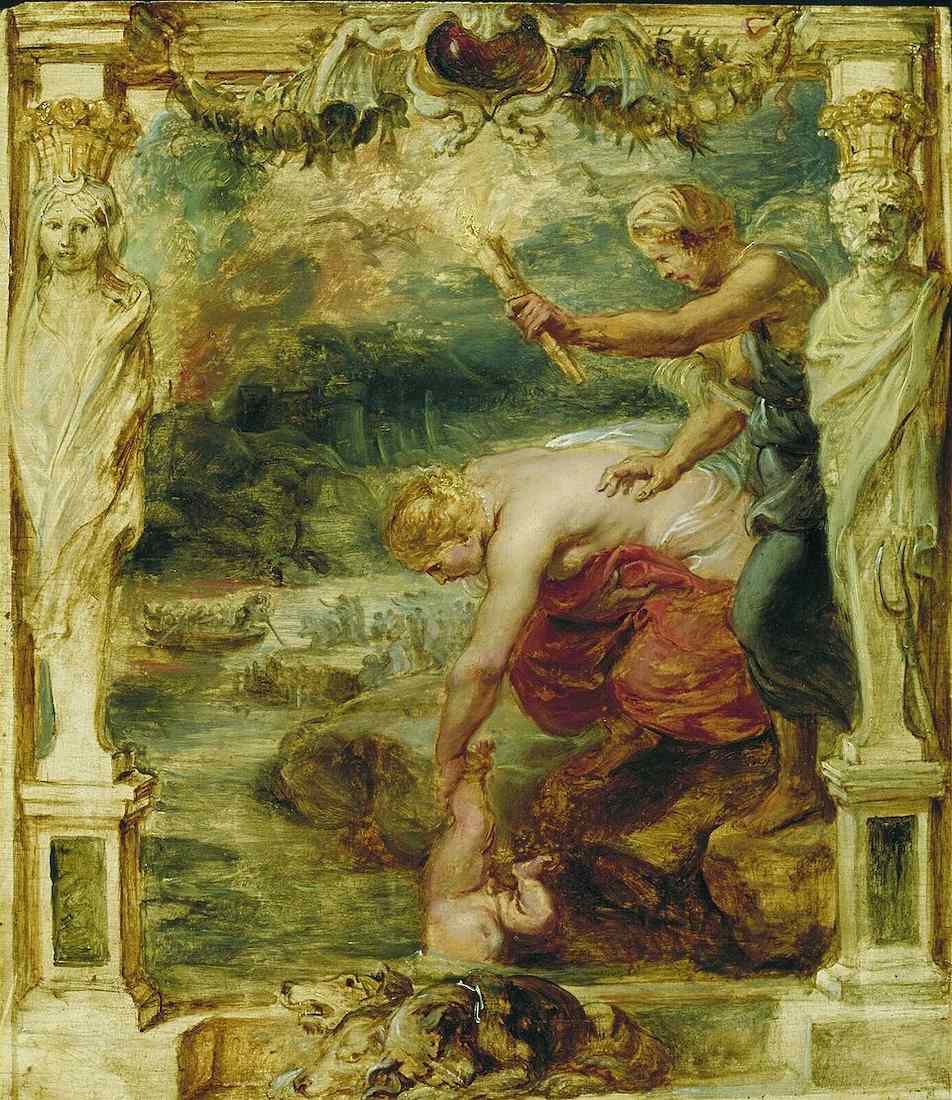
Peter Paul Rubens infused the story of Achilles with Baroque grandeur across an ambitious series of paintings and tapestries. Here, he reimagined Achilles in a sketch of his mother Thetis, who dips her infant son into the River Styx. According to some versions of the myth, this ritual made Achilles invincible, except for the heel Thetis held.
Rubens’ evocative brushwork conveys the emotional bond between mother and infant son, as well as a sense of foreboding—after all, the act meant to protect Achilles instead created the weakness that defined his fate.
Neoclassical Achilles
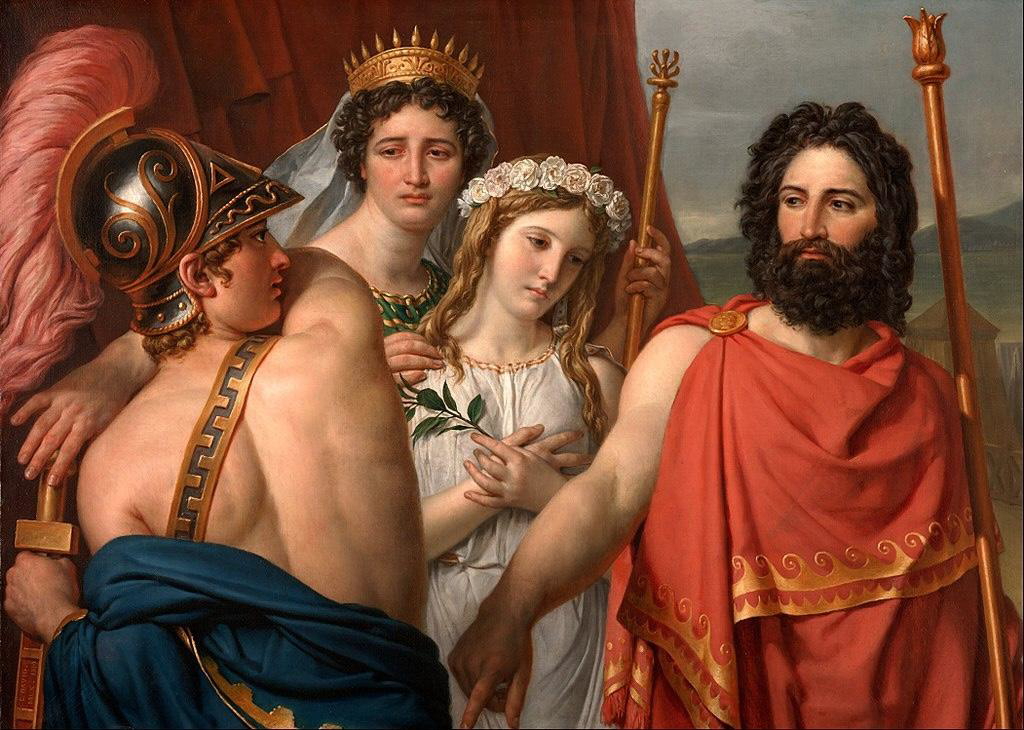
Neoclassicism prized order and clarity in art. Jacques-Louis David’s The Anger of Achilles embodies this vision, depicting Achilles in the moments after Agamemnon takes Briseis from him. The Greek hero appears torn between rage and duty.
A leader of Neoclassical art, David favored restrained coloration, careful compositions, and precise forms without sacrificing psychological depth. Here, Achilles becomes less a warrior of brute strength than a moral figure mentally confronting his betrayal. This interpretation mirrors Enlightenment ideals, where civic duty and rational decision-making were preferred over passion and physical strength.
Romantic Achilles
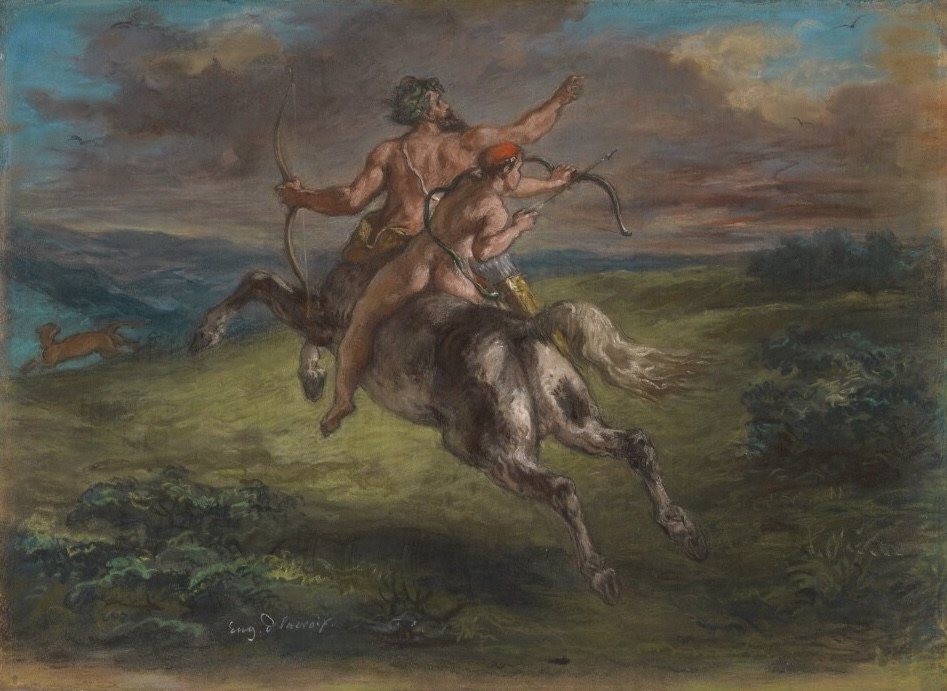
The rise of Romanticism gave Achilles new emotional complexity. In Eugène Delacroix’s The Education of Achilles, the young hero learns from the wise centaur Chiron. Rather than focusing on battle, the painting highlights growth, guidance, and the companionship between teacher and student.
Delacroix’s vibrant colors and dynamic brushwork capture the hero at the cusp of transformation. Achilles is shown not as the invincible warrior but as a boy shaped by mentorship—as well as by fate. Romanticism found in Achilles a mirror for the human condition, a hero defined as much by his internal experiences and emotions as by his external victories.
Achilles Reimagined in Modern Art
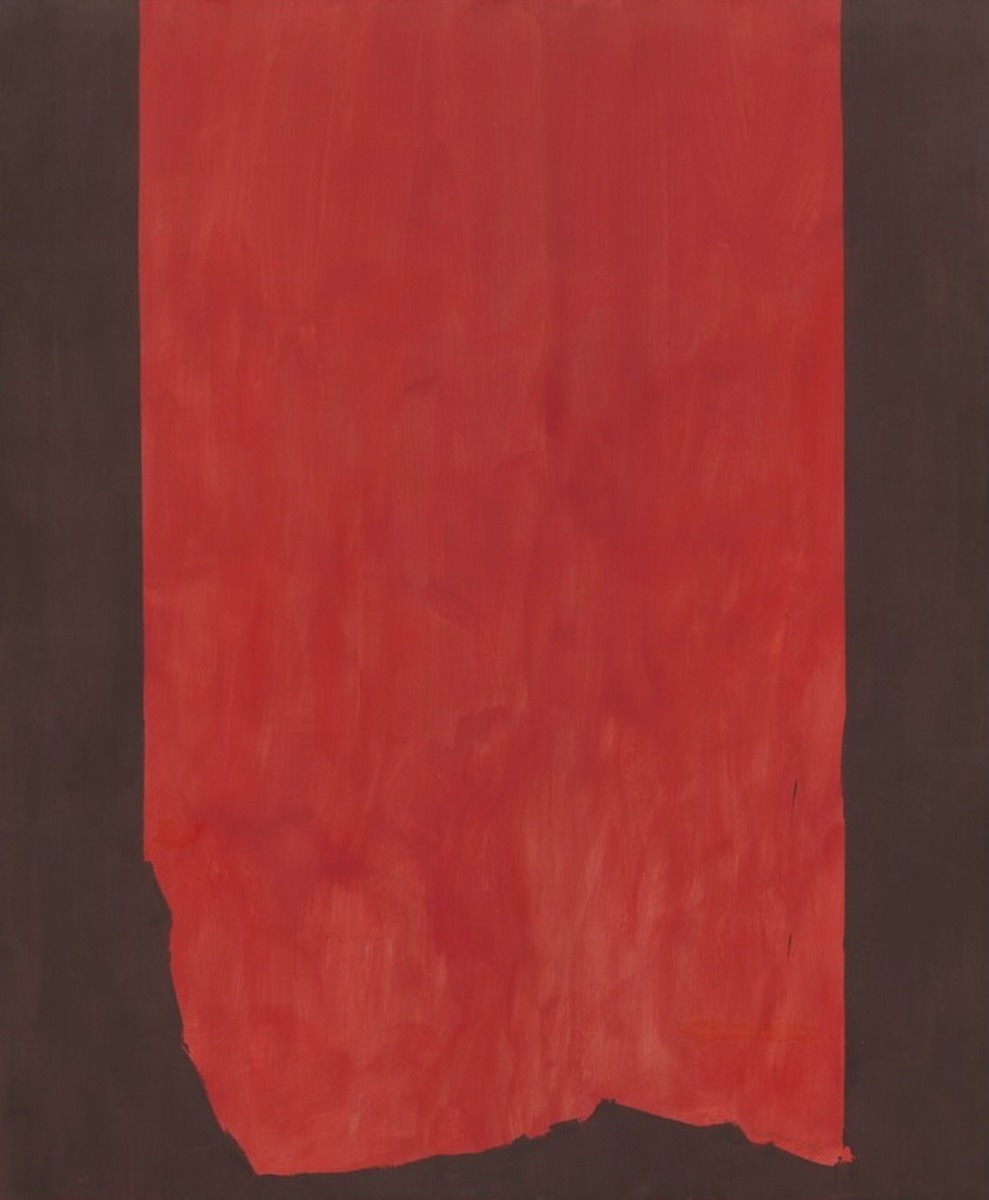
Achilles has also appeared in modern art, transcending more literal forms of storytelling. Painted in the mid-20th century, Barnett Newman‘s Achilles fully abstracts the Greek hero, who is symbolized by non-figurative color and form.
In postwar art, Achilles served as a metaphor for identity, meaning, and existence in a fractured world. Despite being stripped of an obvious narrative, Achilles remained a timeless symbol open to timely interpretations.
Over the eras, Achilles has been reshaped to reflect evolving ideals: brotherhood, tragedy, passion, morality, existential questioning, and so on. The long journey of Achilles in art demonstrates the power of ancient myth to adapt to every age of human creativity and experience.
